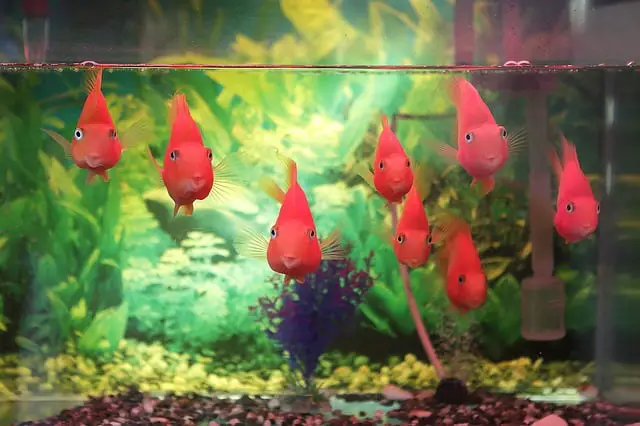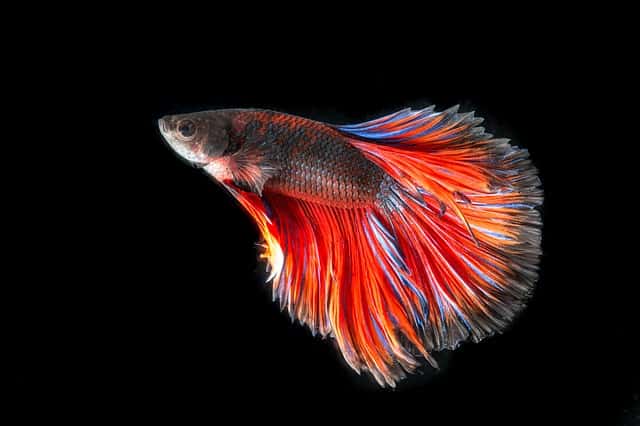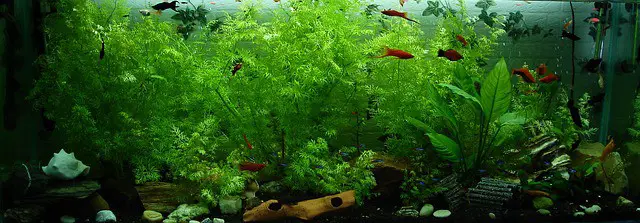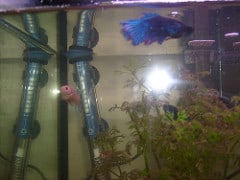Like garden plants on land, aquatic plants in aquariums require certain conditions to grow and thrive. Apart from light and fertilizer, CO2 gas is needed as well. Though fish themselves give off CO2 naturally, sometimes it’s necessary to add more to the tank. Right now, you may be wondering to yourself exactly why that is? Well, I have the answer for you below:
CO2 or carbon dioxide is essential for plant health. It is especially important for maintaining a planted tank environment. CO2 helps to reduce algae overgrowth in an aquarium. Keep in mind that CO2 can cause fluctuations in PH level – usually lowering it making the water more acidic – when dissolved in water so it must be monitored carefully.
Now that you know the reason why CO2 is used in aquariums, let’s take a look at this further and in more detail. We’ll discuss what CO2 is and why it is good for planted tanks. We’ll also explain what it does to fish in an aquarium and why it’s necessary to administer it properly. We’ll even explore the correct way to calculate the required dosage.
So, if you’re ready to learn more about the pros and cons of CO2 in an aquarium, then let’s get started!
What is CO2?
CO2 or carbon dioxide (in its purest form) is a colorless gas with a density 60% greater than that of air. It’s essential for internal respiration in both humans and animals. Plants use it in combination with light and water to generate carbohydrates through a process known as photosynthesis. This process is necessary for all living organisms as it’s the #1 source of oxygen in the atmosphere.
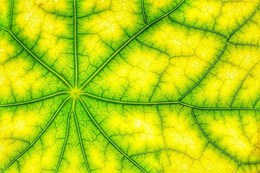
Why Do I Need CO2 in My Aquarium?
CO2 is one of the most important elements in maintaining a planted tank. It’s vital to both aquatic plant health and growth in an aquarium. A continual supply of CO2 is needed during daylight hours (or when the tank it lit) for photosynthesis to occur. Otherwise, aquatic plants can wither and die. This ultimately affects the health of the fish in the tank.
In low-lit aquariums, adding CO2 isn’t always necessary as plants are less inclined to grow when there is limited light. The amount of carbon dioxide given off naturally by the fish and through surface agitation is usually enough. That being said, it’s still okay to add a little CO2 to your low-light aquarium if you want to boost the health and growth of the plants in the tank.
Is CO2 Good for Fish Tanks?
The presence of CO2 in an aquarium is required for the health of all aquatic life, including fish. It helps improve water quality and keeps algae growth to a minimum. This is all due in part to its positive effects on the plants in the tank. Healthy plants equal healthy fish, especially for those that feed on them. On the other hand, too much CO2 can cmake fish sluggish or even sick.
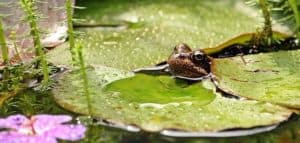
How Does CO2 Affect PH in an Aquarium?
When CO2 gas dissolves in the water of an aquarium, it creates carbonic acid. This acid, in turn, acidifies the water which decreases the pH level. Therefore, it’s imperative that you test the pH frequently. If it’s too low for too long, it can make fish ill and even cause death! Water with a pH less than 6 will kill off the nitrification or ‘good’ bacteria that keeps the ammonias and toxins in the water at bay.
Does Liquid CO2 Work in an Aquarium?
Liquid CO2 is great for use in a low-light aquarium with easy-care plants, especially if you’re new to the hobby. Though not as effective as introducing carbon dioxide gas into your tank via a diffuser, the initial cost is much less. All that is needed is a small dose once a day. The correct amount of CO2 is estimated at around 15mg per litre of water.
A great product to try is API CO2 Booster. It’s available online through Amazon or in-store at your local pet shop. It can be added daily to ensure lush, vibrant plant growth – which is especially important for an aqua-scape tank. Best of all, it can be used in conjunction with other CO2 systems without altering the PH level in the aquarium.
Can Liquid CO2 Kill Fish?
Too much CO2 in an aquarium can be toxic (and thus deadly) for fish. Therefore, it’s imperative that the tank be properly lit with an aquarium light. The ‘right’ amount of CO2 – which is given off by the fish and absorbed by the plants that, in turn, produce oxygen for the fish to ‘breathe’ – will ensure the health of survival of all life in the tank.
How Much CO2 Should I Put in My Aquarium?
The proper amount of CO2 for an aquarium depends upon a variety of factors, including how many plants you have, the water flow, and the surface-to-volume ratio. Therefore, it’s important to properly calculate the CO2 dosage for each tank. The basic ‘rule of thumb’ involves adjusting the bubble count to 10 bubbles per minute per 100 litres of aquarium water.
What are Sign of Too Much CO2 in an Aquarium?
The signs of too much CO2 in an aquarium are easy to spot when it comes to fish. They’re all a direct result of gas toxicity and include lethargy, poor appetite, loss of consciousness, gasping at the surface, and (in extreme cases) death. Should you notice any of these, the fastest and safest way to save your fish is to a large water change immediately.
What is the Use of a CO2 Diffuser in an Aquarium?
A CO2 diffuser is an add-on or standalone device that helps dissolve and regulate CO2 in an aquarium. It works by breaking down big bubbles in the aquarium into smaller bubbles, which are then absorbed by the fish. This helps raise the level of CO2 in the tank easily and effectively.
CO2 diffusers come in a variety of shapes, sizes, and materials (such as glass or plastic). The best ones, however, won’t leak, produce micro bubbles, and are safe, secure and affordable. A good unit to check out online through Amazon is the JARDLI Pollen Glass Diffuser with Bubble Counter for planted tanks.
This device is made of glass and is an unobtrusive and visually appealing addition to any aquascape aquarium. Its bowl-style design distributes micro bubbles throughout the tank allowing for optimal CO2 uptake by water plants. Well rated and reasonably priced, this high-quality unit is worth looking into.
How Do You Setup a CO2 Diffuser?
A CO2 diffuser is a highly effective (and aesthetically pleasing) way to introduce CO2 into your aquarium. It works by pushing the CO2 through a permeable medium that helps to break down the gas into a fine cloud of bubbles. These smaller bubbles are more easily absorbed by the water (and the fish) in your tank.
To install, simply position the diffuser on the opposite side from where your circulation pump in located. The flow from the filter will help push the bubbles downwards, thus promoting higher diffusion rates. For more information, see above under the subheading entitled: What is the Use of a CO2 Diffuser in an Aquarium?
Conclusion
To conclude, carbon dioxide or CO2 is essential for all living organisms. It’s especially beneficial to plants and is vital in maintaining an aquascape environment. CO2 not only supports life in an aquarium, it also helps reduce algae overgrowth which makes the tank look unsightly and increases nitrogen levels. Take note that CO2 often causes fluctuations in PH level when dissolved in water. Therefore, it’s imperative that you monitor it carefully and frequently.
Hopefully, this article ahs been of help to you. Thanks for reading. Good luck and happy fishkeeping.
Related Aquariums at Home Articles
Do Planted Tanks Need Filters?
How to Grow Live Plants in Freshwater Aquarium [Tips Included]



